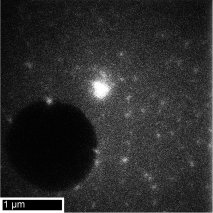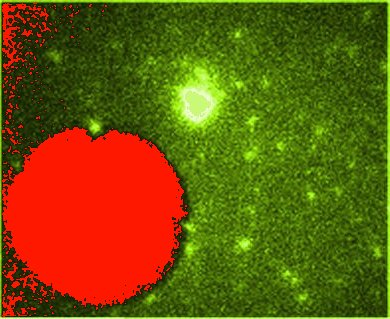Nanocatalyst Imaging Technique
US scientists have created a new imaging mode for dynamic transmission electron microscopes (DTEMs) that allows insight into the dynamics of tiny catalyst materials at very short timescales, in which a rich variety of physical and chemical processes take place. “Our group has developed a dark-field imaging mode for DTEM that enables the highest combined spatial and temporal resolution imaging of nanoparticles achieved thus far”, says Daniel Masiel of the University of California (Davis) and lead author of the work, which was published online this week in ChemPhysChem. According to Masiel, annular dark-field DTEM (ADF-DTEM) could, for the first time, enable direct time-resolved observation of processes such as nanowire growth, catalyst poisoning, and Ostwald ripening at nanosecond timescales.
 Modified Transmission Electron Microscope
Modified Transmission Electron Microscope
A DTEM is a transmission electron microscope that has been modified to include a laser-driven photocathode that can produce a single intense pulse of electrons with a duration of only 15 ns. While the instrument has the potential to provide insight into nanoparticle catalyst dynamics by enabling direct imaging with high spatial and temporal resolution, the limited signal-to-background ratios attainable for dispersed nanoparticle samples have made such studies difficult to perform at optimal resolutions. To overcome these limitations, Masiel and co-workers have fabricated an annular objective lens aperture that permits images to be obtained with a threefold increase in the signal-to-background ratio. This annular dark-field imaging mode improves the contrast attainable in 15 ns-pulsed electron images and allows particles as small as 30 nm in diameter to be observed.
Powerful Method
Other techniques such as coherent diffractive imaging (using coherent X-rays) or in situ TEM offer direct imaging data but at the cost of either spatial or temporal resolution. This is not the case for ADF-DTEM, the researchers say — and they are sure that the new method will find applications in important fields of research: “By enabling the scientific community direct experimental insight into the behavior of nanometer-scale systems at nanosecond time intervals, ADF-DTEM promises to give engineers and scientists a powerful method for exploring systems that are at the core of some of the most crucial energy technologies of both today and tomorrow”, Masiel says.
- Time-Resolved Annular Dark Field Imaging of Catalyst Nanoparticles
D. Masiel, B. Reed, T. LaGrange, G. Campbell, T. Guo, N. Browning
ChemPhysChem, 2010, 11.
DOI: 10.1002/cphc.201000274




